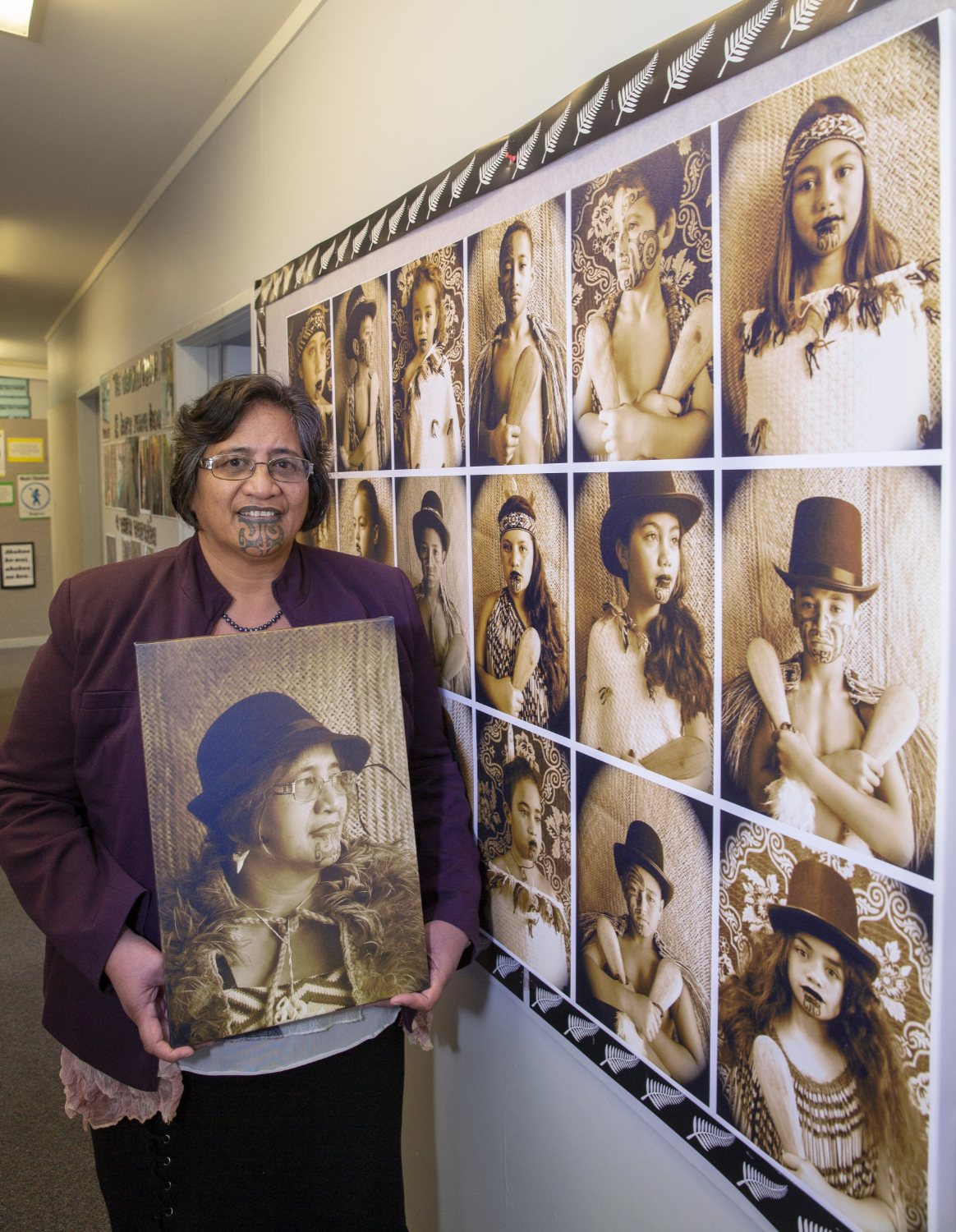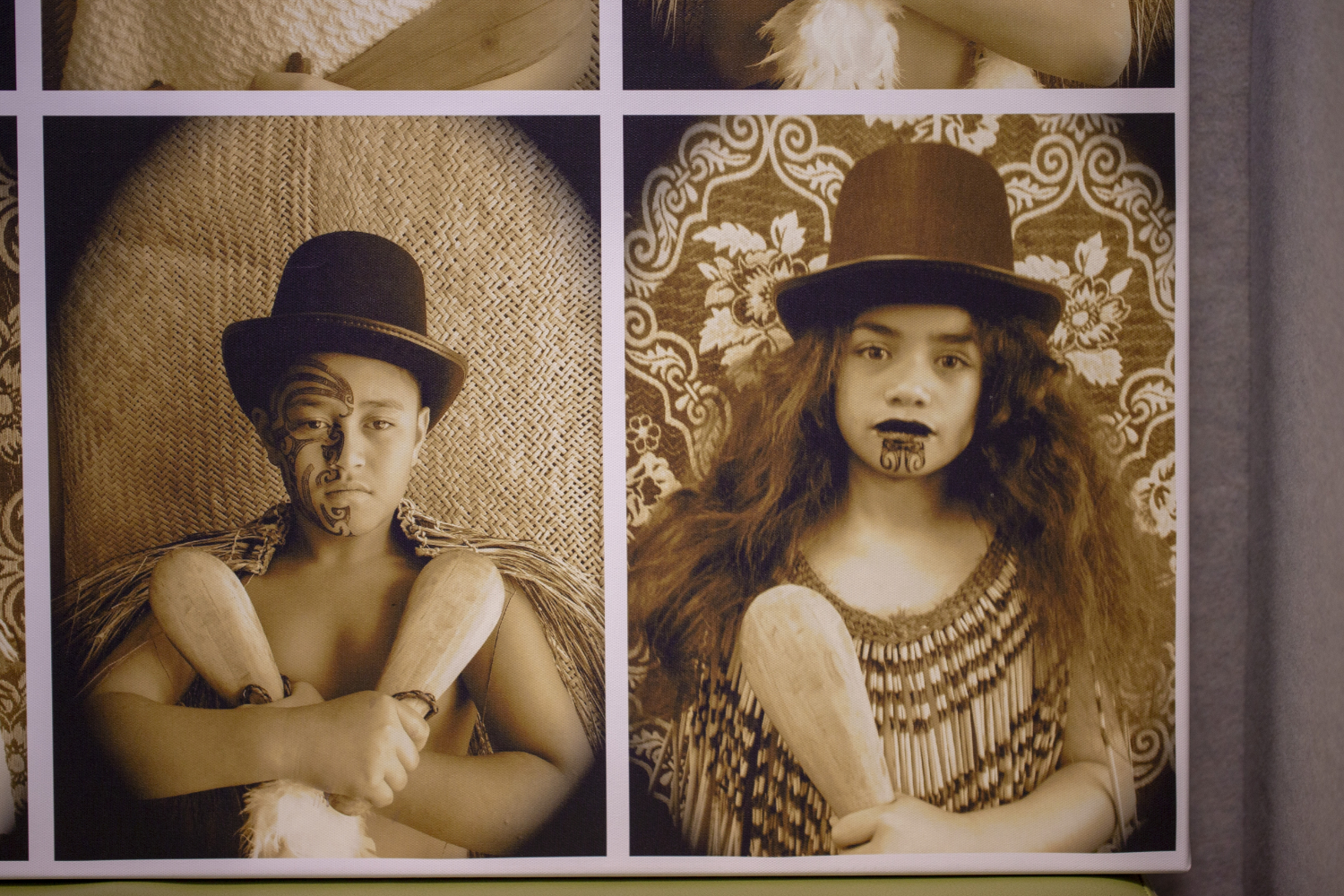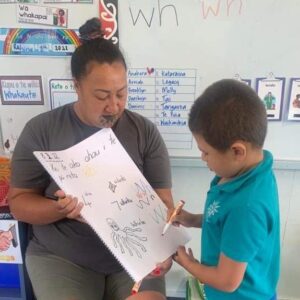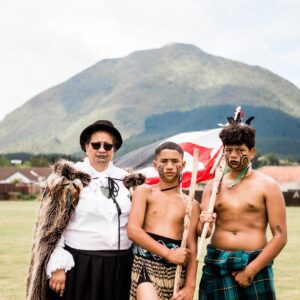Tamariki at Te Whata Tau o Putauaki decided that they wanted do a photo project which depicted their tipuna, after studying the work of nineteenth century New Zealand artists C.F Goldie and Gottfried Lindauer, and the more recent artwork of celebrated New Zealand artist Robyn Kahukiwa.
After studying the artists’ work and historic photos for six to eight weeks and having made some observations about the work, such as the seriousness of the subjects and the use of sepia and black and white in the photos, they worked out how to recreate this in a modern setting.

Having been guided at the start of the project by teachers, the students then became the teachers. Student Aalijah Tamatea said they worked in pairs.
“We taught each other how to work together because we all had different skills – how to do the lighting and angles – we had to listen to each other.”
They worked on their iPads, taking photos of each other, recreating the feeling and tone of the historic photos and paintings. Preparation for the photo shoots was extensive. They dressed each other and stencilled on moko – and to find the correct moko they looked at photos of ancestors.

Some students brought taonga belonging to their family to use in the photo shoot – including kākahu, patu, taiaha, meremere and pukapuka.
After choosing a photo that best represented the period from 1819 to 1940, it was mounted on canvas. They also took portraits of the teachers and principal.

Tumuaki Ripeka Lessels says when the exhibition showed in the Kawerau town hall, many nans and koru cried.
“The exhibition was on for a week and the students were to invite someone special. There were many tears.”
Tamatea says the community was very proud of the students’ work.
“They were amazed that we could take photos like that … that the photos looked like back in the day, the staunch looks. [At the exhibition] some of the kaumātua were crying … they did not know it was us until they had another look.”
All 137 children in the school were eventually photographed as the historic recreation of tipuna and a collage of photos was displayed at the school and outside the town council offices.

Lessels said that teachers learnt new skills from the children such as the technical details involved in taking photos and the use of light.
“The children became the teachers. They had a free rein. They dressed me, told me how to look, where to be, and did several proofs until they got what they wanted.”
She said that the older children got children as young as five years old to participate and had to work out how to interview them for the photo and to get them to respond.

Not only did the project produce beautiful artwork but it also engaged a community and exemplified ako.
In te ao Māori, ako recognises the knowledge that both teachers and learners bring to learning interactions, and it acknowledges the way that new knowledge and understading can grow out of shared learning experiences.
Says Lessels: “It [ako] means both teaching and learning.”




